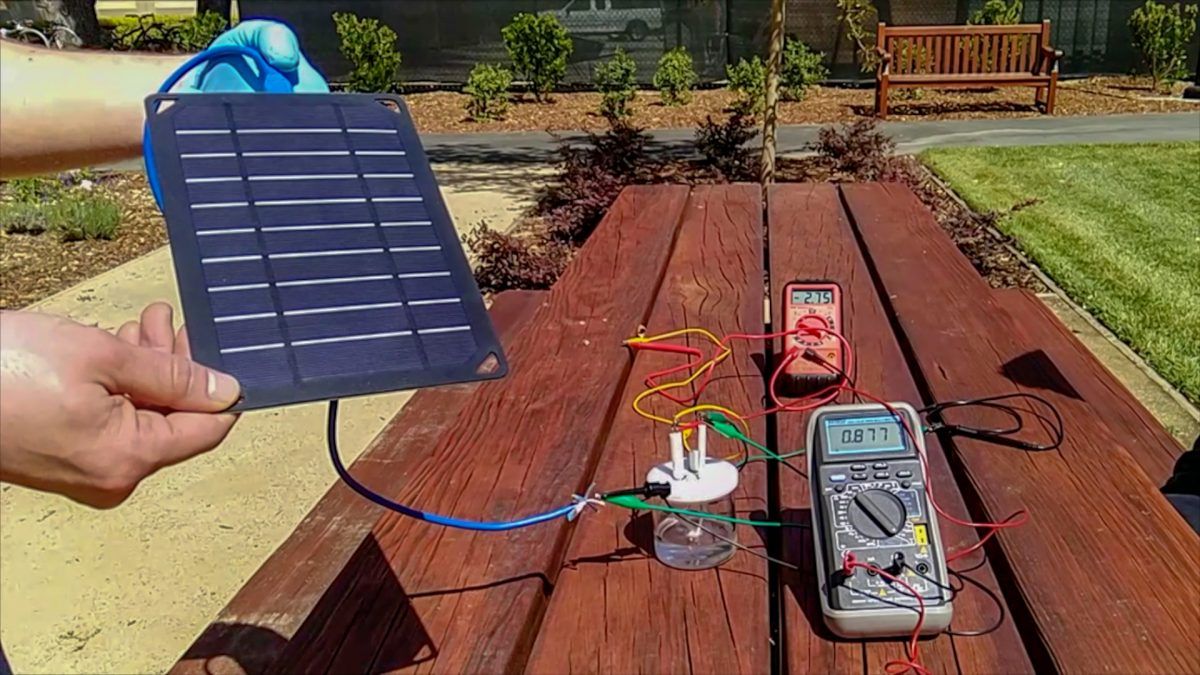
Credit;SWNS
A green fuel that could heat homes and power cars and factories has been created – out of the sea.
Scientists have developed a device that turns saltwater into energy – offering hope of combating global warming.
The technique separates the hydrogen from the oxygen using solar radiation and electrodes.
Hydrogen is the most abundant element in the universe. It has huge promise for clean energy as it only leaves behind water.
But producing it artificially has so far been costly and difficult – relying on highly purified water which is a precious resource in the drugs industry.
Now the US team has come up with a solution with their cheap ‘water-splitting’ machine.
Co-senior author Prof Hongjie Dai said theoretically you would need so much hydrogen “it is not conceivable to use purified water” to power cities and cars.
He said: “We barely have enough water for our current needs in California.”
The prototype described in Proceedings of the National Academy of Sciences produced hydrogen and oxygen gas from seawater collected from San Francisco Bay.
Prof Dai, a chemist at Stanford University in California, said hydrogen is an appealing option for fuel because it doesn’t emit carbon dioxide.
Burning the gas should ease worsening climate change problems. It could also address potential oil shortages.
They claim it would be relatively easy for manufacturers to scale up and mass produce the design.
In terms of transferring the technology “one could just use these elements in existing electrolyser systems and that could be pretty quick,” said Prof Dai.
“It’s not like starting from zero – it’s more like starting from 80 or 90 percent.”
Splitting water into hydrogen and oxygen with electricity – called electrolysis – is a simple and old idea.
A power source connects to two electrodes placed in water. When power turns on, hydrogen gas bubbles out of the negative end – called the cathode. Breathable oxygen emerges at the positive end – or anode.
But negatively charged chloride in seawater salt can corrode the positive end – limiting the system’s lifespan.
Prof Dai and colleagues wanted to find a way to stop those seawater components from breaking down the submerged anodes.
The researchers did this by coating the anode with layers that were rich in negative charges.
They layered nickel-iron hydroxide on top of nickel sulfide, which covers a nickel foam core.
The foam acts as a conductor – transporting electricity from the power source. The nickel-iron hydroxide sparks the electrolysis – separating water into oxygen and hydrogen.
During electrolysis, the nickel sulfide evolves into a negatively charged layer that protects the anode.
Just as the negative ends of two magnets push against one another, the negatively charged layer repels chloride and prevents it from reaching the core metal.
Without the negatively charged coating the anode only works for around 12 hours in seawater.
Co-lead author Michael Kenney, a graduate student in Prof Dai’s lab, said: “The whole electrode falls apart into a crumble.
“But with this layer, it is able to go more than a thousand hours.”
Previous studies attempting to split seawater for hydrogen fuel had run low amounts of electric current as corrosion occurs at higher levels.
But the researchers were able to conduct up to 10 times more electricity through their multi-layer device, which helps it generate hydrogen from seawater at a faster rate.
Prof Dai said: “I think we set a record on the current to split seawater.”
Without the risk of corrosion from salts the device matched current technologies that use purified water.
Mr Kenney said: “The impressive thing about this study was that we were able to operate at electrical currents that are the same as what is used in industry today.”
The basic recipe is surprisingly simple and will open doors for increasing the availability of hydrogen fuel powered by solar or wind energy, said the researchers.
Prof Dai said: “If we had a crystal ball three years ago, it would have been done in a month.”
In the future it could be used for purposes beyond generating energy. Since the process also produces breathable oxygen, divers or submarines could bring devices into the ocean and generate oxygen down below without having to surface for air.
No energy source is perfect. Fossil fuels emit damaging CO2, wind and solar are variable, nuclear generates radioactive waste and biomass fuels deforestation.
Scientists are increasingly looking to the sea for inspiration. Earlier this year a Scottish team showed ocean waves can be converted into clean and consistent energy.
They demonstrated the system in sea-simulating experiments at Edinburgh University’s spectacular £9.5 million water tank – the first of its kind in the world.
https://www.thelondoneconomic.com/lifestyle/discussion/when-our-kids-protest-the-least-grown-ups-can-do-is-listen/15/03/